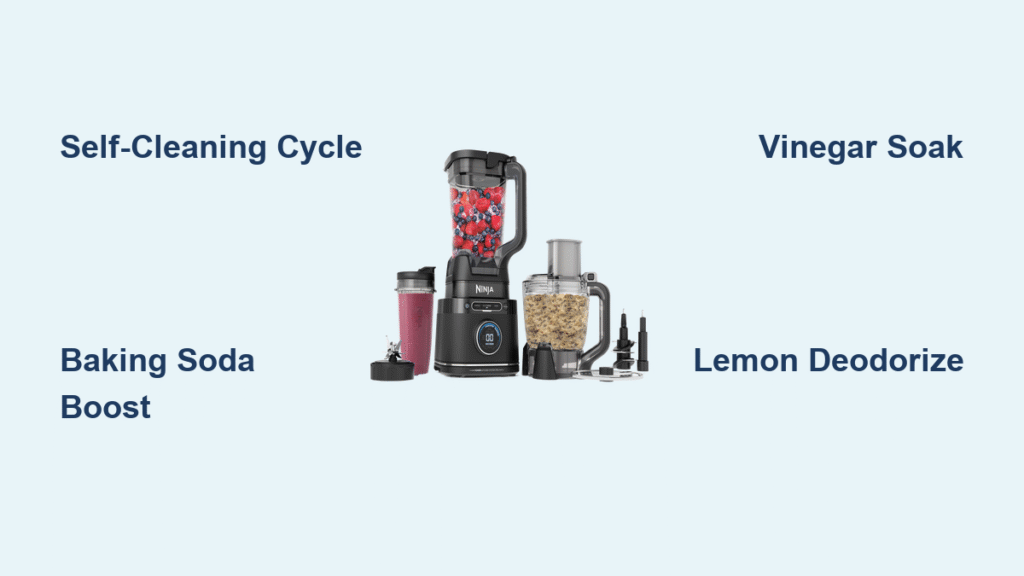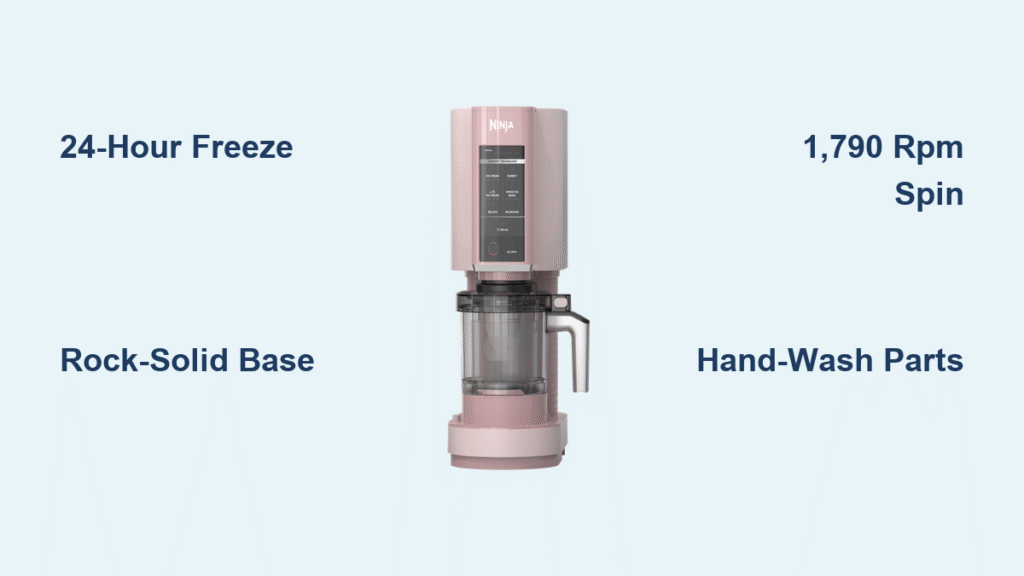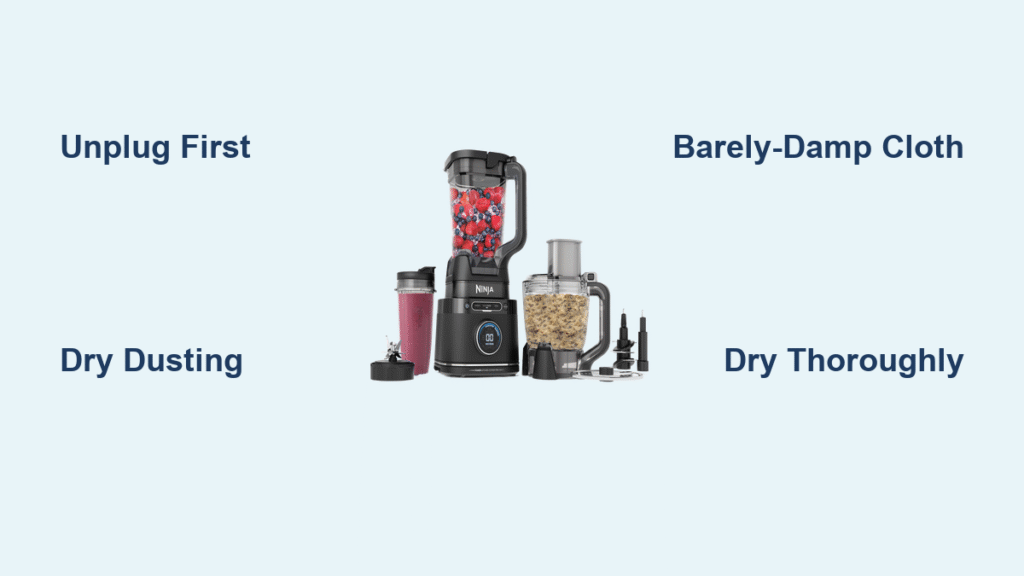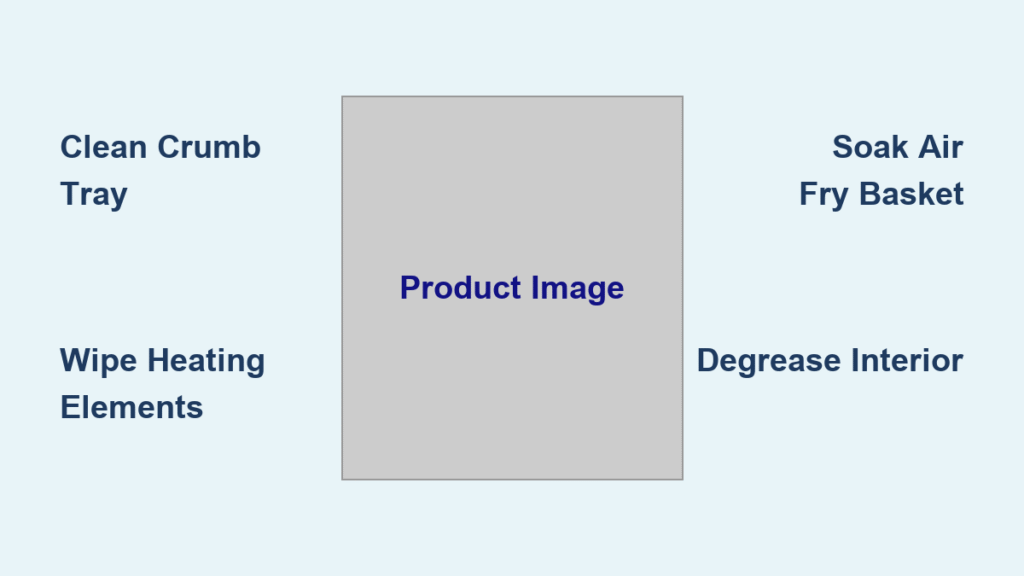Your Ninja blender just pulverized frozen berries into silky smoothie perfection, but now you’re facing stubborn purple streaks clinging to the pitcher walls. That lingering garlic scent from yesterday’s pesto won’t disappear no matter how many times you rinse it. If you’ve ever wondered how to clean Ninja blender components properly without damaging those razor-sharp blades, you’re not alone. Thousands of Ninja owners struggle with cloudiness, stains, and odors that standard rinsing can’t fix. This complete guide delivers field-tested techniques for every cleaning challenge—from quick daily maintenance to removing turmeric stains that seem permanent. You’ll learn exactly which methods restore clarity to foggy pitchers and eliminate odors without harsh chemicals, keeping your blender performing like new for years.
Fix Ninja Blender Stains in 60 Seconds Flat
Skip the scrubbing battle when you tackle stains immediately after blending. This lightning-fast technique works best when ingredients are still wet, preventing them from bonding to plastic surfaces. The key is creating an abrasive cleaning vortex that reaches every hidden corner where pigments hide.
Self-Cleaning Cycle for Daily Maintenance
Fill your Ninja pitcher with 2 cups warm water and 3-4 drops dish soap right after emptying your smoothie. Secure the lid with firm pressure—this prevents leaks during the cycle. Place it on the base and run on maximum speed for exactly 60 seconds. Watch as the powerful blades create a whirlpool that scours the entire interior, dislodging particles from the blade assembly to the rim. Immediately dump the soapy water and rinse under running water until it runs clear. Prop the pitcher upside down on a drying rack for complete air drying—never towel-dry the interior as this can scratch surfaces.
Critical tip: Delaying this step by just 10 minutes allows ingredients to harden, turning quick maintenance into a deep-cleaning chore later. Always perform this immediately after use.
Emergency Stain Rescue Protocol
When you notice stubborn residue after the standard cycle, create a baking soda booster. Add 1 tablespoon baking soda to fresh warm water in the pitcher and blend for 30 seconds at medium speed. The gentle abrasion lifts pigments without scratching plastic. For tomato-based stains, increase baking soda to 2 tablespoons and let the mixture sit for 5 minutes before a second 30-second blend. Rinse thoroughly with cold water to stop the chemical reaction and prevent cloudiness.
Dishwasher Cleaning Without Damaging Blades
Your Ninja blender parts can safely go in the dishwasher—but only if you load them correctly. Many users accidentally warp plastic components or dull blades by improper placement. This method delivers hands-off cleaning when you know exactly where each piece belongs.
Top-Rack Loading Technique for Sharp Blades
Remove blade assemblies from pitchers before loading—never leave them attached. Place blades upside down on the top rack with the sharp edges facing down. This positioning prevents water jets from forcing debris into the blade housing while protecting your hands during unloading. Position lids vertically between cups to prevent water pooling inside. Run on normal cycle settings only—avoid sanitize or high-heat options that can melt plastic components over time.
Post-Dishwasher Drying Protocol
After the cycle finishes, immediately inspect gasket seals for trapped moisture. Use a microfiber cloth to wick water from the rubber seal grooves—this hidden spot breeds mold if left damp. Stand pitchers upside down on a drying rack for at least 2 hours to ensure complete evaporation. Never reassemble components while damp; residual moisture accelerates mineral buildup that causes cloudiness.
Handwashing Ninja Blender Blades Safely

When you need total control over the cleaning process, handwashing prevents damage to delicate components. Most injuries happen during blade handling, so this method prioritizes safety while delivering professional-level results. Always treat Ninja blades as surgical instruments—they’re that sharp.
Blade Assembly Cleaning Sequence
Unplug the base first, then remove the blade assembly and submerge it in warm, soapy water for 10 minutes. This soaking step loosens food particles bonded to metal. Using cut-resistant gloves, grip the assembly by its outer housing—not the blades. Dip a soft bottle brush into the soapy water and clean between blades from center outward, maintaining constant downward pressure to avoid accidental slips. Rinse under running water while rotating the assembly until water flows cleanly through all openings.
Pitcher Interior Scrubbing Method
With blades removed, focus on the pitcher’s problem zones. Mix 1 tablespoon baking soda with dish soap to create a gritty paste. Apply this to a non-scratch sponge and scrub the bottom corners in tight circular motions—this targets the vortex’s dead zones where ingredients accumulate. For cloudy areas, switch to a melamine foam pad (Magic Eraser) dampened with vinegar. Rinse with cold water until surfaces feel squeaky clean, indicating all residue is gone.
Erase Turmeric and Blueberry Stains Permanently
Tomato sauce, beetroot, and blueberries leave stubborn discoloration that standard cleaning can’t touch. These three targeted methods use chemical reactions to break down pigments at a molecular level—no scrubbing required.
Vinegar-Baking Soda Shock Treatment
Combine 3/4 cup white vinegar and 1/4 cup baking soda directly in the stained pitcher. The immediate fizzing action lifts pigments from plastic pores. Fill the rest with warm water and let sit for 30 minutes without blending—agitation can set some stains deeper. For turmeric, add 1 tablespoon lemon juice to boost the reaction. Rinse thoroughly with cold water to neutralize acidity that could cause cloudiness.
Dishwasher Detergent Overnight Soak
Pour 2 tablespoons powdered dishwasher detergent into the pitcher and fill with hottest tap water. The enzymes in detergent break down organic compounds overnight. Submerge a clean toothbrush in the solution to clean blade crevices. After 8 hours, dump the solution and scrub with a soft cloth—stains should wipe away effortlessly. Never use liquid detergent; powder contains stronger stain-fighting agents.
Banish Garlic and Onion Odors for Good
That lingering pesto smell means odor molecules have penetrated the plastic. These methods neutralize compounds at their source rather than masking smells with fragrances.
Lemon-Zest Deodorizing Cycle
Add one whole lemon (with peel) cut into quarters to your pitcher. The essential oils in the peel contain d-limonene, nature’s most powerful degreaser. Fill with hot water, secure the lid, and blend for 60 seconds. Let the mixture sit for 15 minutes—the steam opens plastic pores to release trapped odors. Rinse with cold water and air dry with the lid off to prevent moisture trapping new smells.
Baking Soda Paste Deep Treatment
For persistent odors, create a thick paste of baking soda and water. Smear it liberally inside the pitcher and let sit for 12 hours—overnight works perfectly. The extended contact time allows baking soda to absorb deep-seated molecules. In the morning, rinse with white vinegar to dissolve the paste, then do a final water rinse. This double-action method eliminates odors from egg-based smoothies and dairy residues.
Restore Crystal Clarity to Cloudy Pitchers
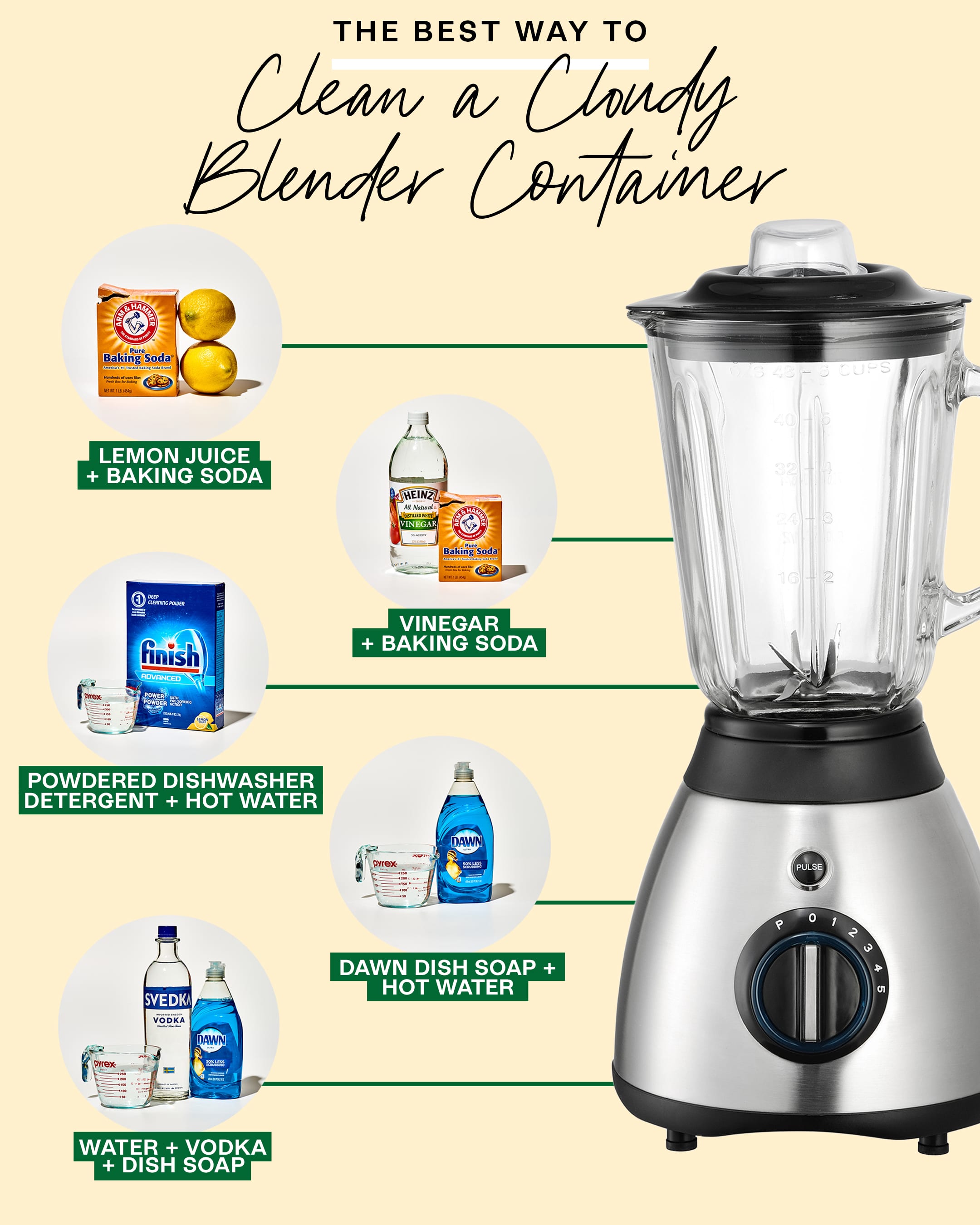
Mineral deposits from hard water or fruit acids create permanent-looking fog. These techniques dissolve buildup without scratching—never use abrasive pads on cloudy surfaces.
Sequential Vinegar Treatment
First, soak the pitcher in undiluted white vinegar for 1 hour to loosen deposits. Then apply baking soda paste to the interior and let sit for 20 minutes. Pour in 1 cup fresh vinegar to trigger a foaming reaction that penetrates cloudy areas. Leave this mixture overnight. Next morning, rinse with bottled water (to prevent new mineral deposits) and dry with a microfiber cloth. Repeat if cloudiness persists in the bottom vortex area.
Clean Every Ninja Component Without Injury
Blade Assembly Safety Protocol
Always wear cut-resistant gloves when handling blades. Soak assemblies for 15 minutes in warm soapy water before cleaning. Use a toothpick to dislodge debris from the central shaft—never force metal into blade housing. After cleaning, store blades in a dedicated container with the sharp edges covered until dry.
Gasket Seal Mold Prevention
Remove the rubber gasket using a butter knife and soak in 1:1 vinegar-water solution for 10 minutes. Scrub the groove with an old toothbrush to remove black mold spots. Air dry completely on a clean towel before reinstallation—trapped moisture here causes 80% of mysterious odors.
Critical Safety Rules You Must Follow
Blade Handling Survival Guide
Never rinse blades under running water while holding them—the force can cause slips. Instead, clean them submerged in soapy water. Store disassembled blades in a marked container away from other utensils. If blades become dull (indicated by uneven chopping), replace them immediately—dull blades require more force and increase injury risk.
Motor Base Protection Protocol
Unplug the base and dampen a microfiber cloth with distilled water—never spray cleaners directly. Wipe in circular motions around control buttons. For dried splatters, use a toothbrush dipped in rubbing alcohol. Always dry with a second clean cloth within 5 minutes to prevent moisture seepage into electrical components.
Prevent Future Cleaning Emergencies
30-Second Post-Blend Rinse Routine
Rinse the pitcher with cold water immediately after emptying contents—hot water sets proteins. Leave it filled with water if you can’t clean within 30 minutes. This simple step prevents 95% of deep-cleaning scenarios by stopping ingredients from bonding to plastic.
Monthly Stain Prevention Cycle
Run a lemon-baking soda cleanse monthly even with no visible stains. Fill the pitcher with 1 cup water, juice of one lemon, and 2 tablespoons baking soda. Blend for 30 seconds, then let sit for 10 minutes before rinsing. This routine prevents mineral buildup that causes permanent cloudiness.
When stubborn stains resist standard methods, combine vinegar and baking soda treatments sequentially—never simultaneously as the reaction deactivates both ingredients. For extreme cases, soak blade assemblies in powdered dishwasher detergent for 24 hours before gentle brushing. Remember that persistent cloudiness affecting blending performance means it’s time for replacement—don’t risk motor strain on compromised pitchers. Consistent daily rinsing and monthly deep cleans will keep your Ninja blender delivering professional results for years. The secret isn’t complicated equipment—it’s knowing exactly which method solves each specific problem without damaging your investment.

